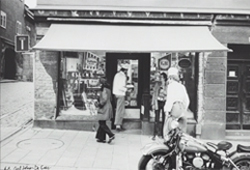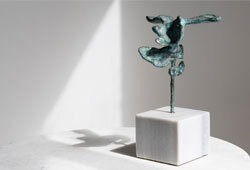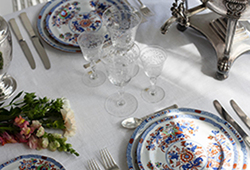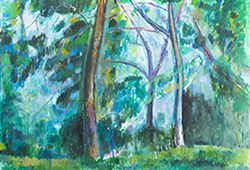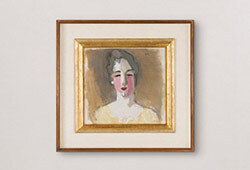Einar Jolin
Model in a pink blouse.
Signed Jolin and dated 1919. Canvas 65 x 49 cm.
Provenance
Bukowski Auctions, Stockholm, Autumn Modern Auction 557, 2010, cat. no. 21.
More information
Einar Jolin grew up at Kammakargatan 45 in the so-called ‘Jolinska huset’, a palace-like house built by his grandfather Johan Jolin with three floors and a beautiful garden facing Wallingatan. In addition to his parents, his brother Erik, his two sisters Ingrid and Signe, Einar's grandmother Mathilde Wigert-Jolin and his aunt Ellen Jolin, who was a painter, lived in the house when he was growing up. Einar therefore grew up in a place close to Tegnérlunden, Adolf Fredrik's church and Vasaparken. In the centre of the city with the districts of Norrmalm, Vasastaden and Kungsholmen around the corner, which certainly also contributed to Einar Jolin's love of depicting the city, the buildings, the roofs and the views of Stockholm. Einar Jolin loved his home and when you look at his interior paintings, you often find the decor from his home, the Gustavian furniture, the Empire tables, the Chinese embroidery and the East Indian porcelain.
The gentle portrait of the girl in the pink blouse, dated 1919, shows grey painted window linings and a beautiful East Indian stylised dish on the green wall. The painting has previously been referred to as ‘the artist's sister’, which is a possibility, but as her dark features do not match those of the Jolin family, it is more likely to be a young lady who has come to visit. It could possibly be Hildur Wapler, who was a postal assistant and lived on Kungstensgatan in Vasastan (portrait of ‘Hildur Wapler’ exhibited at Liljevalchs konsthall in 1957, cat no. 26, page 29). The interior, on the other hand, can be assumed to be from the Jolin house on the basis of similar interiors that have been preserved in the same area, unfortunately a comparison with the real environment cannot be made because the Jolin house was demolished in the 1930s. The young lady has a calm aura and the whole composition is well composed, executed with a palette in line with Matisse's teachings.






